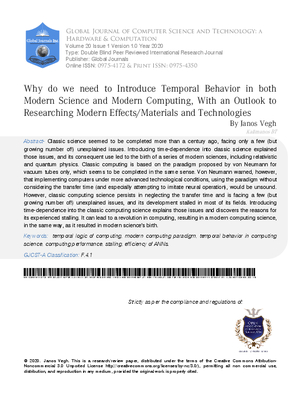Abstract
Classic science seemed to be completed more than a century ago facing only a few but growing number of unexplained issues Introducing time-dependence into classic science explained those issues and its consequent use led to the birth of a series of modern sciences including relativistic and quantum physics Classic computing is based on the paradigm proposed by von Neumann for vacuum tubes only which seems to be completed in the same sense Von Neumann warned however that implementing computers under more advanced technological conditions using the paradigm without considering the transfer time and especially attempting to imitate neural operation would be unsound However classic computing science persists in neglecting the transfer time and is facing a few but growing number of unexplained issues and its development stalled in most of its fields Introducing time-dependence into the classic computing science explains those issues and discovers the reasons for its experienced stalling It can lead to a revolution in computing resulting in a modern computing science in the same way as it resulted in modern science s birth
This work is licensed under a Creative Commons Attribution 4.0 International License.
Copyright (c) 2020 Authors and Global Journals Private Limited

